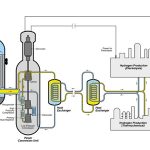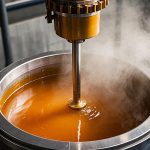In the world of medical oxygen therapy, the importance of selecting the right oxygen cylinder cannot be overstated. Patients with respiratory conditions rely on these cylinders to ensure consistent oxygen delivery, supporting their health and well-being. However, with many options available, it’s important to understand the differences between Steel Cylinder,Aluminum Cylinder, and Fiber Cylinder. Each type has unique features, including material, durability, weight, and portability. These factors directly impact the patient’s treatment and daily life. The right choice can ensure safety, mobility, and the ability to lead an active, independent life.
The main differences between these three types of oxygen cylinders lie in their materials and intended uses. Steel Cylinders are typically made of steel. They offer strong pressure resistance but are heavier, making them suitable for stationary settings like hospitals. Aluminum Cylinders are made from aluminum alloy. This makes them lighter than Steel Cylinders and more suitable for home healthcare or mobile patients. Fiber Cylinders use advanced composite materials, such as carbon fiber or fiberglass. These materials are both lightweight and durable, making them ideal for patients who require flexible treatment.
In this article, we will delve deeper into how each type of cylinder—Steel Cylinder,Aluminum Cylinder and Fiber Cylinder—impacts healthcare delivery, particularly in terms of portability and patient independence.

Introduction of Steel Cylinder, Aluminum Cylinder, and Fiber Cylinder
When it comes to medical oxygen cylinders, choosing the right type is crucial to ensuring patient safety, mobility, and effective treatment. These cylinders, used to store and deliver oxygen to patients with respiratory issues, come in various types, each designed with specific applications in mind. The most commonly discussed are Steel Cylinder, Aluminum Cylinder, and Fiber Cylinder , which differ primarily in their material construction, weight, and durability.
Steel Cylinders
Steel Cylinders are typically made from steel and have been a standard in medical oxygen delivery systems for many years. Known for their robustness and strength, these cylinders are ideal for stationary use, offering significant storage capacity but at the cost of weight. Their steel construction ensures they can withstand high-pressure conditions, but they tend to be heavier and less portable compared to newer materials.
Aluminum Cylinders
Aluminum Cylinders, in contrast, are constructed from aluminum alloy. These cylinders are lighter than their counterparts made of steel, making them more suitable for applications where portability is a key factor, like home healthcare. The aluminum alloy provides a balance between strength and weight, offering better portability without compromising much on durability and pressure resistance.
Fiber Cylinders
Fiber Cylinders represent the cutting-edge of oxygen cylinder technology, constructed from composite materials, such as carbon fiber or fiberglass. These composite cylinders are much lighter than both Steel Cylinders and Aluminum Cylinders while maintaining excellent pressure resistance. Their advanced construction makes them ideal for situations where both portability and durability are essential. This is especially true for emergency medical services or patients who need to stay mobile with their oxygen supply.
In the next section, we’ll explore how the unique features of these three types of oxygen cylinders can affect healthcare delivery, particularly in terms of portability and independence. Understanding these differences will empower healthcare providers and patients alike to make the best choice based on their specific needs.
Portability and Independence in Healthcare – Choosing The Right Cylinder
In healthcare, especially in managing respiratory conditions, the portability and independence of a medical oxygen cylinder are critical. These factors ensure the patient’s quality of life. As more patients manage their conditions from home or while traveling, the ability to move freely with a reliable oxygen supply becomes essential. Choosing the right oxygen cylinder type—Steel Cylinders , Aluminum Cylinders, or Fiber Cylinders—can greatly impact the patient’s comfort and independence.
Portability: A Key Consideration
Portability refers to the ease with which a cylinder can be transported from one place to another. This is particularly important for patients who require continuous oxygen therapy but also need to maintain an active lifestyle. A bulky, heavy cylinder can hinder mobility, while a lightweight, compact cylinder makes it easier for the patient to move around freely.
Steel Cylinders
While durable and ideal for stationary use, are often too heavy for patients who require frequent mobility. These steel cylinders are generally not the best option for home use or for patients who need to travel or move around regularly. The weight of these cylinders, especially when filled with oxygen, can be cumbersome, potentially leading to strain or fatigue.
Aluminum Cylinders
Made from aluminum alloy, strike a better balance between weight and strength. They are significantly lighter than Steel Cylinders, making them more suitable for home healthcare and daily activities. For patients who need to move between rooms or run errands, these cylinders provide greater flexibility without sacrificing too much in terms of oxygen storage capacity.
Fiber Cylinders
Which utilize composite materials like carbon fiber, are the lightest option available. They are highly portable, making them ideal for patients who need to stay mobile, whether at home or while traveling. These cylinders are easy to carry and much more convenient for on-the-go use. This makes them the preferred choice for active patients or those who frequently need oxygen during daily activities.
Independence: Empowering Patients with Freedom
Independence in healthcare means giving patients the freedom to live life on their own terms, without being bound by medical equipment. For individuals who require supplemental oxygen, having the right cylinder can enhance their sense of independence. A portable oxygen system allows patients to move freely, visit family, or even travel, without constantly needing assistance from healthcare providers.
Steel Cylinders

It may restrict a patient’s independence because of their bulkiness. These cylinders are often designed for stationary use in clinical settings, and while they offer a larger capacity, they don’t provide the same level of freedom for patients who need to move around frequently.
Aluminum Cylinders
They are offer a good balance of portability and storage capacity. They are easier to handle than Steel Cylinders, allowing patients to maintain a level of independence while managing their oxygen needs. These cylinders are also less cumbersome to transport and can be used in more diverse environments, including at home or on short trips.
Fiber Cylinders
The ultimate solution for patients seeking total independence. Due to their lightweight, composite construction, these cylinders provide the utmost convenience and portability, enabling patients to travel, work, and live more freely. Whether it’s for a quick trip to the store, a weekend getaway, or even air travel, Fiber Cylinders are designed to give patients the flexibility they need to live an active life while managing their respiratory condition.
The choice of the right oxygen cylinder largely depends on the patient’s needs regarding portability and independence. Patients who require mobility and wish to retain their freedom to engage in everyday activities should prioritize lighter cylinders, such as Fiber Cylinders or Fiber Cylinders. However, for those who primarily need stationary oxygen supply with high storage capacity, Steel Cylinders remain an essential option. Understanding the balance between weight, strength, and convenience is crucial to selecting the most appropriate oxygen cylinder for a patient’s lifestyle.

MINNUO Oxygen Cylinder
The MINNUO oxygen cylinder is available in materials such as aluminum alloy and steel. The aluminum alloy cylinder emphasizes portability, being lighter and more convenient to carry compared to traditional steel cylinders, making it ideal for mobile use, such as home healthcare and travel. While steel cylinders offer larger storage capacity and greater durability, they are less portable than aluminum alloy cylinders. Both materials ensure good pressure resistance and can reliably provide long-lasting oxygen supply. Regardless of the material, you can choose the oxygen cylinder that best suits your needs. MINNUO offers flexible and reliable options for various situations.
Conclusion
When selecting a medical oxygen cylinder, it’s essential to choose the one that best meets the patient’s needs. Whether seeking mobility or requiring a stable oxygen supply, the right cylinder can significantly enhance a patient’s quality of life.
For efficient, convenient oxygen therapy, MINNUO composite oxygen cylinders are undoubtedly the ideal choice. With their lightweight design, durability, and excellent oxygen delivery performance, MINNUO offers a more flexible, independent lifestyle.
If you have any questions about selecting the right oxygen cylinder, feel free to contact us—MINNUO is here to provide expert consultation and guidance.



